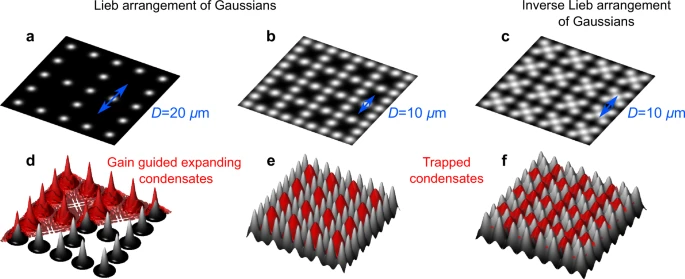Phys.org September 30, 2021
An international team of researchers (Russia, UK) used all-optical methods to create an artificial lattice whose nodes house polaritons called Lieb lattice, which usually does not occur in nature. Programmable spatial light modulator was used to shape a laser beam into a lattice inside the cavity. The generated polaritons both increased in number and became more energetic where the laser field was most intense and forming condensates at high enough laser power. The high-energy polariton waves escaped the condensates scattered and diffracted across the lattice. When the lattice constant was decreased, the condensates underwent a phase transition from the ballistic regime to the opposite case of deeply trapped condensates now residing in the potential minima of the lattice. At intermediate lattice constants the condensates fractured across multiple energies. They have demonstrated that that it is possible to produce completely dispersionless crystal bands, also known as flatbands, where particle mass becomes effectively infinite. The results will be of great interest to nonlinear optics, condensed matter physics, cold atoms, light-matter physics, and polaritonics. They can be used for the design of next-generation devices…read more. Open Access TECHNICAL ARTICLE

Schematic of the optical excitation pattern and resulting polariton condensates. Credit: Nature Communications volume 12, Article number: 5571 (2021)